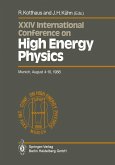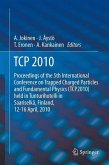This book offers a comprehensive exploration of the phenomenology surrounding high-energy particle interactions. When particles possess kinetic energy surpassing their rest energy, remarkable phenomena occur. Colliding particles at such high energies can lead to the creation of entirely new particles, illuminating the intricate workings of the universe. Through vivid explanations, this book elucidates the intricate processes that unfold during particle collisions. From proton collisions yielding pions and kaons to electron-positron collisions producing muons, each collision unveils a tapestry of particle interactions. Central to these interactions is the exchange of photons, which come in various forms. Among them are electromagnetic (EM) photons, akin to the light photons that bind electrons to protons within atoms. Then, there are the heavy bosons responsible for beta decay, crucial mediators of weak interactions that govern the decay of particles such as muons and pions. Additionally, there exist photons that bind quarks within protons and neutrons, facilitating the strong force that holds atomic nuclei together. In 'High Energy Physics: A Level and Transition Approach,' we embark on a journey through the diverse array of particles and photons that orchestrate these interactions, shedding light on the fundamental forces shaping the fabric of our universe.
Bitte wählen Sie Ihr Anliegen aus.
Rechnungen
Retourenschein anfordern
Bestellstatus
Storno








